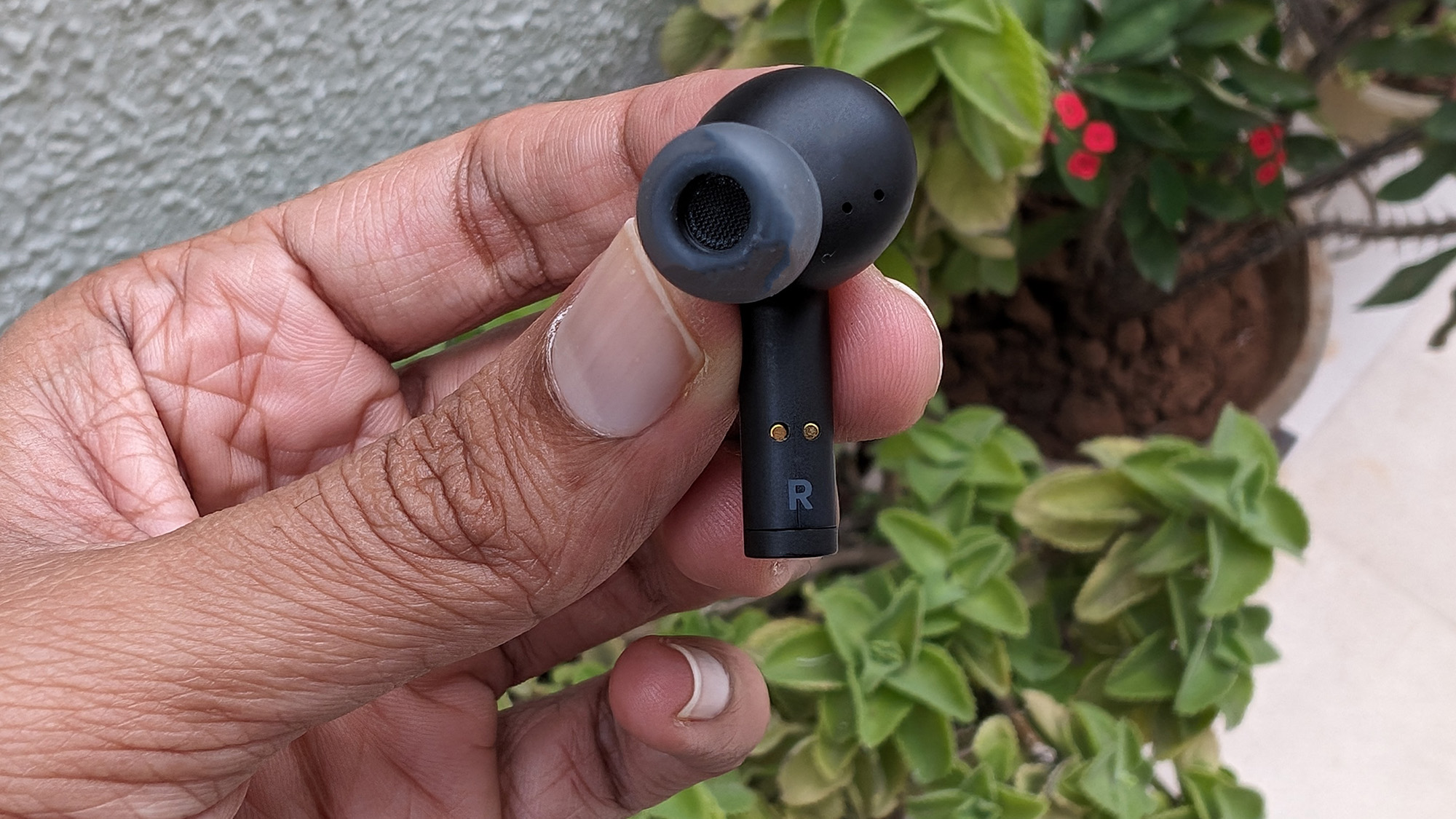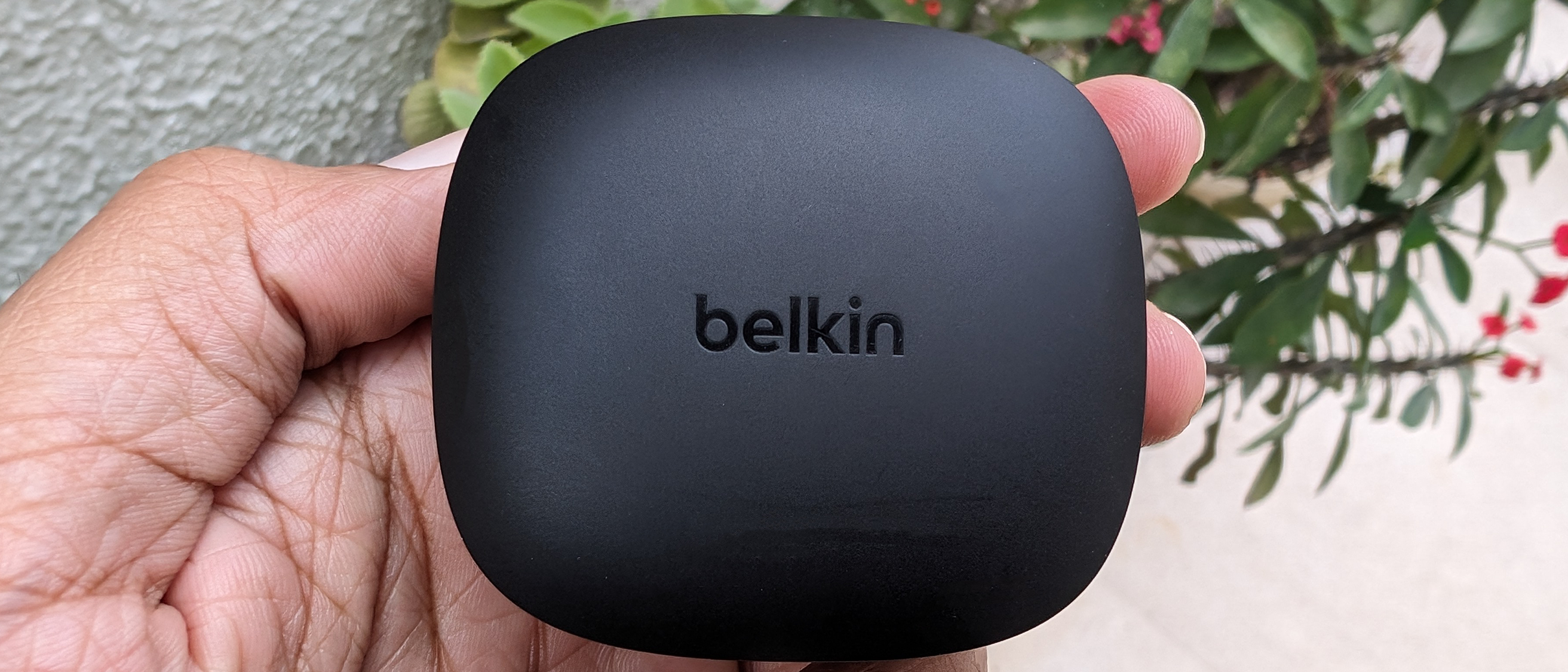Laptop Mag Verdict
For anyone looking for a high-end ANC experience for about $100, the Belkin SoundForm Pulse are a no-brainer. They offer incredible value for their price and apart from the underwhelming software as well as the lack of in-ear detection, they are nearly fault-free.
Pros
- +
Affordably priced
- +
Excellent sound quality
- +
Strong ANC
- +
Wireless charging
- +
Outstanding battery life
Cons
- -
Generic design
- -
Relatively large case feels cheap
- -
Basic companion app
Why you can trust Laptop Mag
You no longer have to spend a fortune to own noise-cancelling earbuds. You do, however, have to live with a compromise or two. Some budget earbuds offer poor mics, some sound shallow, and others lack high-end perks like multi-point connectivity. For a little over $100, Belkin’s latest SoundForm Pulse somehow seems to have it all.
The Belkin SoundForm Pulse features most of what you’d want from a pair of earbuds, including active noise cancellation, wireless charging, multi-point connectivity, and up to 36 hours of battery backup. At $120, it undercuts most of its competition as well, including the Nothing Ear 2, and the Beats Studio Buds. Is it too good to be true? After spending weeks with the Belkin SoundForm Pulse, here’s what we found out.
Belkin SoundForm Pulse: Design and build
At first glance, the Belkin SoundForm Pulse don’t look like much, and if it weren’t for the logo etched in the charging case, you’d almost mistake them for a cheap knockoff. The plasticky case appears to be one of the areas where Belkin has cut costs. Its hinge tends to creak sometimes and doesn’t inspire confidence over whether it can last a couple of years. The black colour especially attracts stains and fingerprints a bit too easily.
Belkin also oddly chose to omit a reset button on the charging case and the only way you can put it in the pairing mode is by long-tapping the earbuds. It’s not a dealbreaker but I did have to dig into the manual to figure out how to do it. A dedicated button would have gone a long way for less tech-savvy users.
Flip the case open and you’ll find two run-in-the-mill AirPods-style earbuds in their magnetic slots. While the true-wireless buds won’t turn any heads like the Nothing Ear 2, they are well-built and feel comfortable even when I use them for six hours straight on a flight. Because of their slightly elongated stems, though, they are a hair heavier than the competition but you’ll barely notice it. Belkin bundles the standard three bud sizes in the box and I doubt anyone will struggle with the fit.
Despite the design, Belkin has opted for touch controls for the SoundForm Pulse instead of the more trendy stem controls found on the likes of the Nothing Ear 2 and the AirPods Pro. The back of the SoundForm Pulse’s bud is touch-sensitive and you can access a host of playback options with a combination of taps. A single tap pauses music, a two-second tap-and-hold tweaks the noise cancellation, and so on.
The SoundForm Pulse’s customizable controls worked as I expected and typically responded instantly. That said, I’d much rather prefer them on the stems instead as I often ended up accidentally triggering these gestures when I tried to readjust the fit.
Sign up to receive The Snapshot, a free special dispatch from Laptop Mag, in your inbox.

Belkin SoundForm Pulse: Hardware and connectivity
The Belkin SoundForm Pulse offer better water and dust resistance than most of their peers, including AirPods Pro, and the Nothing Ear 2. They are IPX5-rated, which means they can survive sweat and the occasional spills and rain but you certainly can’t swim with or submerge them in water.
Another highlight is support for multi-point connectivity. You can simultaneously connect to two devices and switch between them. If I’m listening to music on my computer and get a call on my phone, for example, I can pick it up, and the earbuds will automatically switch to it.
One of the pet peeves I had with the SoundForm Pulse is that there are no in-ear detection sensors and they won’t automatically hit pause when you take them off or resume when you put them on. Of course, it only takes a second to use the touch gesture, but at times when, say, someone speaks to me while I’m wearing, and I take a bud out to respond, it’s far more convenient for them to do that on their own. Because of how handy this is, it has quickly become standard across most price segments and is available even on more affordable options such as the $99 Anker Soundcore Liberty.
Belkin SoundForm Pulse: Software
The Belkin SoundForm Pulse’s software experience was a bit of a letdown. Its minimal companion app not only lacks a couple of key features but also can be buggy at times.
Like most earbuds, the SoundForm Pulse’s app allows you to customize the touch controls, tweak its equalizer or pick from a bunch of presets, and update its firmware. In addition, you can switch between noise cancellation, and the “Hear-Thru” mode, with which you can decide how much external noise you want to let in. On Android phones, it also supports Google’s Fast Pair service so that you don’t have to fuss with the Bluetooth settings to pair them.
My biggest complaint with its software is there’s no way for you to check how much battery is precisely left. At the top, there are two battery rings that give you a decent estimate for the earbuds, but if you’d like to know the same for the charging case, you’ll have to rely on its status light’s color, which again won’t tell you the exact level. White indicates a full charge, orange means at least 50%, and red is for less than 50%.
More importantly, both its iOS and Android versions often refuse to detect the earbuds at all, and when they do, will get stuck at the “Connecting” stage until I restart the app or reset the earbuds. Hopefully, Belkin can address many of these concerns via updates.
Belkin SoundForm Pulse: Audio and noise cancellation
Listening to music on the SoundForm Pulse is a joy. Out of the box, its 12mm drivers are tuned to a balanced EQ and it emits a rich and clear sound that’s deep enough to separate any track’s highs and lows. It can come off as a bit low on the bass but you can fix that from the companion app.
I was also pleasantly surprised at how wide the soundstage was. This means that when you listen to complex tunes like classical music or live concert versions, you’ll be comfortably able to make out the numerous, overlapping instruments and concurrent undertones, including the crowd noise, without it becoming a mushy mess. Even on relatively simpler tracks like Neil Young’s Heart of Gold, I can enjoy the smooth harmonica, without losing sight of the drumbeat in the backdrop building up to the verse. However, it does struggle a bit to keep the EQ consistent at high volumes, resulting in a flatter output than what you’d experience at mid-levels.
The Belkin SoundForm Pulse’s active noise-cancellation was excellent too. It can block out most day-to-day noises or at least curtail them enough so that they don’t bother you anymore. For instance, during a subway ride, it suppressed the chitter-chatter and the rail’s clickity-clack enough so that I could enjoy a podcast without raising the volume to the max. At a co-working space, similarly, it manages to mute the buzzing air conditioner and my colleagues’ keyboards. You’ll find it less effective in more challenging conditions like peak hour traffic.

Belkin SoundForm Pulse: Battery life
The Belkin SoundForm Pulse is amongst the longest-lasting earbuds I’ve tested in this price segment. On a single charge, the earbuds can go on for 5-6 hours with ANC enabled, and the case can top them up for about 25 hours of additional playback time. I typically only had to charge them once a week (~3 hours daily).
When you do have to plug them in, a 10-minute charge gets you an hour of endurance. You can charge them wirelessly using a standard Qi pad or through the USB-C port on the back of the case.
Belkin SoundForm Pulse: Mic performance
There are a total of six microphones on the Belkin SoundForm Pulse -- three on each earpiece and together they deliver one of the best mic performances I’ve experienced in this price range. It does a good job of isolating and boosting my voice to produce a crisp and loud output.
Even in scenarios with a lot of disturbances, the SoundForm Pulse’s algorithms don’t turn your voice into a muffled and robotic mess, unlike many of their peers. That could be because as opposed to artificially cutting off the ambient noise altogether, the SoundForm Pulse instead chooses to lower their frequencies. While on a call with a running tap in the background, for example, the person on the other end could hear me well, albeit against a backdrop of a faint water sound.

Bottom line
For anyone looking for a high-end ANC experience for about $100, the Belkin SoundForm Pulse is a no-brainer. They offer incredible value for their price and apart from the underwhelming software as well as the lack of in-ear detection, they are nearly fault-free.
Surprisingly, Belkin also gets right many of the concerns I typically have with lower-end true wireless earbuds like lacklustre microphones. Unless you can grab any higher-end earbuds at a discount (The Pixel Buds Pro were available for $129 at the time of writing), I’d recommend picking up the Belkin SoundForm Pulse.
Shubham Agarwal is a freelance technology journalist from Ahmedabad, India. His work has previously appeared in Business Insider, Fast Company, HuffPost, and more. You can reach out to him on Twitter.

